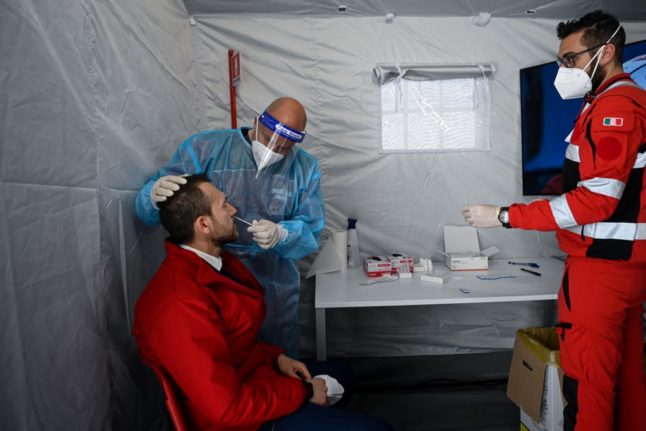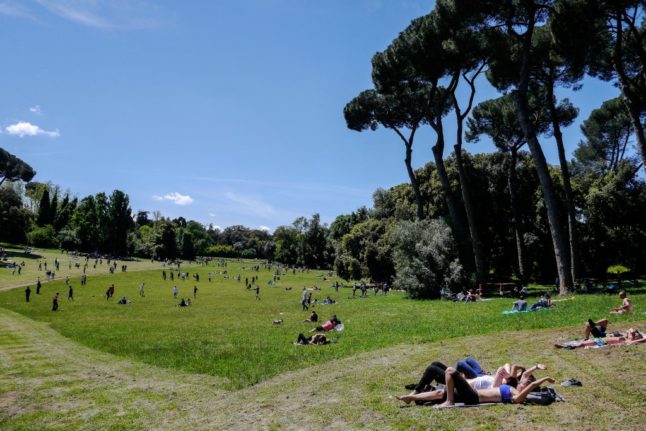As of May 16th, Italy has scrapped its quarantine requirement for all travellers from EU member states, including for those travelling for non-essential reasons. But these arrivals are still required to show a negative test result (just one, not two as was previously the case).
From most other countries at the moment stricter rules, including both quarantine and testing requirements, remain in place in almost all cases. See the Italian government’s entry rules by country here.
There are no exemptions to the testing requirement at present for fully-vaccinated travellers to Italy from any country, though the EU is looking at changing the rules.
Some of the travellers who are now allowed to enter Italy again from List C countries have written to The Local to ask whether they can take a rapid coronavirus test, or whether it’s mandatory to take a PCR swab test.
What are the types of test you can take?
Italy’s health ministry says that the results of both PCR and antigenic swab tests are accepted.
A PCR (molecular) test – this is the more reliable, but also more time-consuming test which tells you if you are actively infected with coronavirus. It involves taking a nose or throat swab and examining it for traces of the virus’s genetic material. The sample has to be sent to a lab for analysis, which means results can take around a day.
It’s considered the most reliable form of testing, even if it’s not 100 percent accurate. This kind of test can be taken alone, or may be needed to confirm the results of an antigen or antibody test.
An antigen test (sometmes known as a ‘rapid swab’ test) is also conducted via a nasal swab, but the sample is tested for proteins that are found on the surface of the virus – a simpler and quicker process which means you can get the result within around 15-20 minutes. These are the tests being used for the screening of passengers at airports, stations and ferry terminals in Italy.
READ ALSO: How you can get a free coronavirus test in 11 Italian cities
Italy does not appear to accept the results of sierological (blood) tests or rapid home tests, also known as lateral flow tests.
All travellers need a ‘green certificate’ proving their negative test result, according to the Italian health ministry. This is the name being used for a piece of paper from a testing centre which states your result. The Italian government has not given any requirements for the certificate to be in Italian, English or any particular language.
According to the health ministry’s guidance, travellers eligible for entry from “list C” countries must:
- Produce a green certificate proving that you have taken a negative molecular or antigen swab test in the 48 hours prior to entering Italy
- complete the digital Passenger Locator Form, which replaces the previous self-declaration;
- notify the prevention department of the health authority responsible for the area of your entry (See page: COVID-19 Freephone numbers and regional information
In the event of failure to produce a green certificate proving a negative swab test, passengers are subject to the following preventive measures:
- ten days of self-isolation at the address provided in the digital Passenger Locator Form
- swab test at the end of the ten-day isolation period.
Children aged 2 and under are exempt from the requirement.
As the travel rules are subject to change at short notice, anyone planning to travel to Italy is advised to check this official Italian government travel calculator, which gives the current requirements for entry from each country (in English).
Reader questions:
- What are the rules on driving between Italy and the UK right now?
- What does UK’s new travel advice for Europe’s ‘amber’ countries mean?
Travellers may also need to take a coronavirus test before travelling home from Italy. You can find testing stations at major Italian airports, and we have a list of testing centres which provide results in English here.
For more information on the requirements for travel to Italy (in English):
- Italian Foreign Ministry’s information page for Italian citizens returning from abroad and foreign citizens in Italy
- Italian Foreign Ministry’s ‘safe travels’ website www.viaggiaresicuri.it
- Italian Health Ministry’s travel information page.
You can also call the Italian coronavirus information line:
- From Italy: 1500 (toll-free number)
- From abroad: +39 0232008345 , +39 0283905385
See the latest news updates from Italy in The Local’s travel section.



 Please whitelist us to continue reading.
Please whitelist us to continue reading.
I have a problem with the test being taken 48 hour before. If you are coming from Australia or even the US with a connection, how is it possible you can actually make this deadline?! Most countries ask for 72 hours- a little more reasonable.
Just think: you take your test 48 hours before your scheduled entry into Italy let’s say Tuesday at 10AM US time.
You wait about 24 hours before you get the result. Sometimes longer in my experience. You get to let’s say Amsterdam where you connect on your way to Florence. You then wait four hours for your flight. Remember you’ve also lost 6 hours due to time change…guess what? You’re over the 48 hours! Ridiculous! And that’s the US. Imagine China or New Zealand!
You can get a swab test done in the airports..?